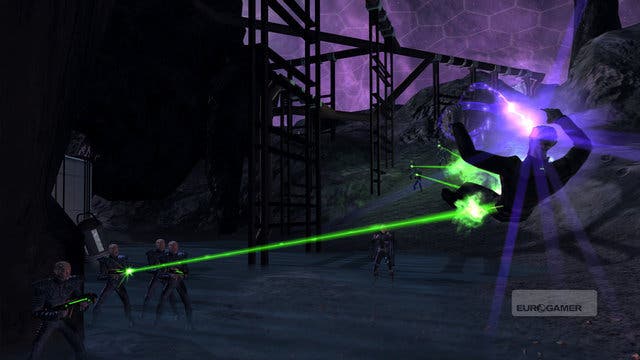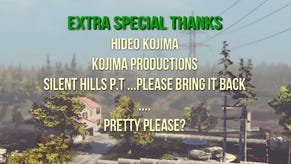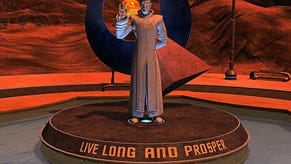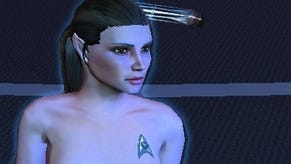Star Trek Online
Engage?
These bridge officers essentially take the role of skill slots - you equip them, deploy them and level them up in menus, and as you level up you'll be able to use more and more of them. Your crew is a main element of player customisation according to Zinkievich - you'll get to name them, choose their appearance and equip them as you please. When you're not teamed up with other starship captains, they'll also accompany you planetside, making the game relatively solo-friendly.
With the Klingon ships vanquished, it's time to beam down. The away team always consists of five people - you, a friend and three bridge officers, five players, or you on your own with your AI pets. The perspective, combat and pace of the game all change completely when you undertake on-planet missions, upping the tempo to an action-game rhythm. The AI can take care of itself, or you can command it directly - warning the red-shirt to stay back, for instance, or putting the poor unfortunate in front of everyone else as a human phaser-shield.
Equipment, rather than stats, dictates the flow of the game on planets. You can equip two weapons - we see a phaser and a plasma rifle, and the Klingons on the planet surface are all packing bat'leths (that tremendously impractical-looking two-handed slashing weapon famous from The Next Generation). There are three careers that determine your skills - science, engineering or tactical - but there's a lot of flexibility within those disciplines. You could follow a warrior or stealth archetype within any of them.

The planet we see is a jungle with Romulan-style buildings. "We have hundreds and hundreds of maps in the game right now," claims Zinkievich. "We have invested a lot of time and engineering resources in what we call the genesis system, which allows the game to algorithmically generate new planets, new systems and new alien races to meet." While story content will probably have been designed by the game's artists, other exploration will be generated automatically.
The studio seems full of ideas for the story, perhaps unsurprisingly given the richness of their source material. It's set in 2309, 30 years after Nemesis and 22 years after the supernova that destroyed the Romulan homeworld. It wouldn't be Star Trek without time travel, mirror universes and the Borg, all of which make preposterously unlikely meetings with long-dead characters from the series a possibility.

There are already plenty of ideas in place for post-release updates, too - including ground vehicles and the ability to go inside your own ship and use it as a lobby space - but Cryptic wants to make sure you can customise every aspect of your bridge and officer's quarters, rather than just giving players a generic space to call their own. You don't lose access to old ships as you gain new ones, in case you ever fancy taking your starter-class ship out for a spin for old time's sake. Plans for the high-level game are also looking promising; it will offer raid-style Borg battles, and exclusive areas for endgame players
We're getting a beta "really soon", apparently - "I can't tell you exactly or I'll get yelled at," grins Zinkievich - and the PC release in 2010 will be followed by a console release sometime in the future (although we don't know exactly which consoles yet). Star Trek Online is clearly shooting for a broad audience, and though its permissiveness and flexibility might mean it lacks depth for players who like keen specialisation, it's an approach that makes sense when you're trying to fulfil the childhood dreams of a huge number of people.








.png?width=291&height=164&fit=crop&quality=80&format=jpg&auto=webp)




.jpg?width=291&height=164&fit=crop&quality=80&format=jpg&auto=webp)
